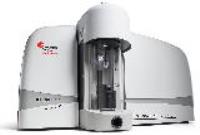 Add My Company
Add My Company
Sign In

Abstract
Coffee is prepared by the extraction of a complex array of organic molecules from the roasted bean, which has been ground into fine particulates. The extraction depends on temperature, water chemistry and also the accessible surface area of the coffee. Here we investigate whether variations in the production processes of single origin coffee beans affects the particle size distribution upon grinding. We find that the particle size distribution is independent of the bean origin and processing method. Furthermore, we elucidate the influence of bean temperature on particle size distribution, concluding that grinding cold results in a narrower particle size distribution, and reduced mean particle size. We anticipate these results will influence the production of coffee industrially, as well as contribute to how we store and use coffee daily.
LS 13 320 XR
The LS 13 320 MW Laser Diffraction Particle Size Analyser was used to analyse the coffee. Please find more information here about the all new LS 13 320 XR.
Key Features:
Expanded dynamic range: 10 nm ? 3,000 ?m
Real data down to 10 nm
Streamlined processes and compresses workflows
Intuitive software interface for results in three clicks or less
Smaller footprint
For more information on The effect of bean origin and temperature on grinding roasted coffee talk to Meritics Ltd
Enquire Now
List your company on FindTheNeedle.

